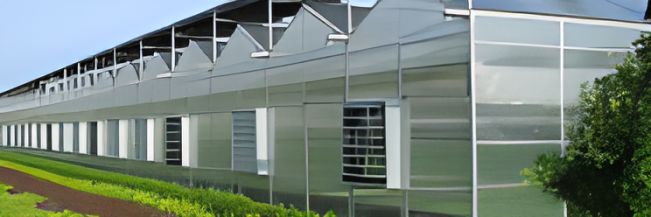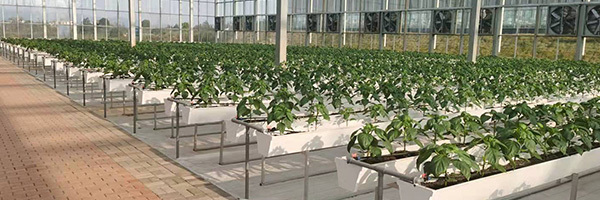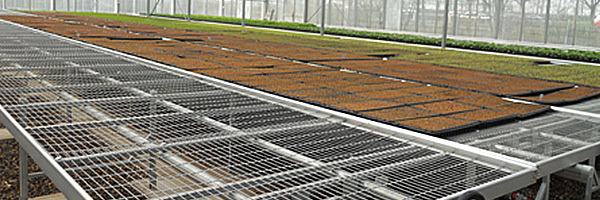-
-
Company Profile
-

Greenhouse Structures

-
Polycarbonate sheet greenhouse
-
Glass greenhouses
-
Multi-Span film greenhouse
-
Solar greenhouse
-
Sightseeing greenhouse
-
Double-film frame solar greenhouses
-
Glass and polycarbonate sheet greenhouses
-
Glass greenhouses structures suitable for planting
-
Glass Greenhouse for Scientific Research
View More -
-

-

The Science Behind Glass: Why It’s Ideal for Research Greenhouses
Release time:
2025-07-06
The Science Behind Glass: Why It’s Ideal for Research Greenhouses Introduction to Glass in Greenhouse Architecture In the realm of horticulture and agricultural research, the choice of building materials can significantly impact plant growth and experimentation results. Among these materials, **glass** stands out for its unique properties that foster a controlled environment conducive to research.

The Science Behind Glass: Why It’s Ideal for Research Greenhouses
Introduction to Glass in Greenhouse Architecture
In the realm of horticulture and agricultural research, the choice of building materials can significantly impact plant growth and experimentation results. Among these materials, **glass** stands out for its unique properties that foster a controlled environment conducive to research. This article will explore the **scientific principles** that make glass an optimal choice for research greenhouses, examining its **physical properties**, benefits in plant cultivation, and the role it plays in enhancing scientific outcomes.
The Unique Properties of Glass
Transparency: The Key to Optimal Light Penetration
One of the most significant advantages of glass is its **transparency**, which allows for maximum light penetration. Research indicates that plants require specific wavelengths of light for photosynthesis. **Glass** provides a clear pathway for both visible light and UV radiation, essential for stimulating growth and development. This transparency differs dramatically from other materials like plastic, which can obscure certain light wavelengths.
Thermal Properties: Insulation and Heat Retention
Glass is not only transparent but also possesses excellent **thermal insulation** properties. When properly designed, glass greenhouses maintain a stable internal temperature, allowing for year-round cultivation, regardless of external weather conditions. This characteristic is particularly crucial for research, where consistent environmental conditions are necessary to validate experimental results.
Durability and Longevity of Glass Structures
Another noteworthy quality of glass is its **durability**. Unlike plastic, which can degrade over time due to UV exposure, glass can last for decades with minimal maintenance. This longevity makes glass a cost-effective choice for research institutions that require long-term infrastructure for ongoing studies.
Benefits of Glass in Research Greenhouses
Enhanced Growth Conditions for Plants
The interaction between glass and light creates ideal conditions for **plant growth**. Research has shown that plants grown in glass greenhouses exhibit healthier growth patterns and higher yields compared to those cultivated in less transparent structures. The ability to control light intensity and duration leads to optimized growth cycles, essential for experimental agriculture.
Climate Control and Environmental Stability
A critical aspect of scientific research is the ability to control environmental variables. Glass greenhouses can be equipped with advanced climate control systems that regulate temperature, humidity, and CO2 levels. This stability allows researchers to conduct experiments under specific conditions, yielding more reliable data.
Facilitating Research and Experimentation
The clarity and stability provided by glass make it easier to observe plant behavior and collect data. Researchers can study plant responses to various stimuli, such as light and temperature changes, without the interference of external environmental factors. This leads to a deeper understanding of plant biology and more effective agricultural practices.
The Role of Glass in Sustainable Agricultural Practices
Energy Efficiency Through Passive Solar Heating
Modern glass greenhouses utilize **passive solar heating** to reduce energy consumption. By designing structures that optimize sunlight during the day, researchers can lower heating costs while maintaining optimal growth conditions. This energy efficiency aligns with sustainable agricultural practices, demonstrating how glass can contribute to eco-friendly research initiatives.
Water Conservation and Irrigation Efficiency
The controlled environment of glass greenhouses also promotes efficient **water use**. Researchers can implement advanced irrigation systems that minimize waste, ensuring that plants receive just the right amount of moisture. This not only conserves water resources but also enhances plant growth, making glass greenhouses a smart choice for sustainable agriculture.
Challenges and Considerations When Using Glass
Initial Investment and Construction Costs
While glass offers numerous benefits, the initial investment in constructing a glass greenhouse can be significant. Financial considerations include the cost of materials, labor, and advanced climate control systems. However, many institutions find that the long-term benefits outweigh these initial expenses, especially considering the durability and efficiency of glass structures.
Maintenance and Care Requirements
Maintaining glass greenhouses can also pose challenges. Regular cleaning is essential to prevent algae and dirt buildup that can obstruct light. Institutions must allocate resources for ongoing maintenance to ensure the greenhouse remains functional and efficient.
The Future of Glass in Research Greenhouses
Innovations in Glass Technology
The future of glass in research greenhouses looks promising, with ongoing innovations aimed at enhancing its properties. Smart glass technologies that adjust transparency based on sunlight levels, as well as self-cleaning glass, are on the horizon. These advancements will increase the efficiency and effectiveness of glass greenhouses in research applications.
Expanding Applications in Various Fields
Beyond horticulture, the use of glass greenhouses is expanding into various fields, including biotechnology and environmental science. As researchers seek controlled conditions for experimentation, the versatility of glass structures will play a vital role in various scientific domains.
Conclusion
In conclusion, the unique properties of glass make it an ideal choice for research greenhouses. Its transparency, thermal efficiency, and durability create optimal conditions for plant growth and scientific experimentation. As agricultural research continues to evolve, glass will remain at the forefront, adapting to new technologies and sustainability practices. Institutions investing in glass greenhouses will not only benefit from enhanced research capabilities but also contribute to the advancement of sustainable agricultural practices.
FAQs
1. What are the primary benefits of using glass in greenhouses?
Glass greenhouses offer transparency for optimal light penetration, thermal insulation for climate control, and durability for long-term usage.
2. How does glass affect plant growth?
The transparency of glass allows for maximum light exposure, essential for photosynthesis and promoting healthier plant growth.
3. Are glass greenhouses energy-efficient?
Yes, modern glass greenhouses can utilize passive solar heating, reducing energy consumption and promoting sustainable practices.
4. What maintenance is required for glass greenhouses?
Regular cleaning is necessary to remove dirt and algae buildup, ensuring that light penetration remains optimal.
5. Are there any downsides to using glass in greenhouses?
The initial investment and construction costs can be higher compared to other materials, and ongoing maintenance is required to keep the structure effective.Keyword:
Related News
Exploring the Benefits of Glass Greenhouse Structures for Optimal Plant Growth
Glass greenhouses are increasingly becoming a popular choice for both commercial and hobbyist gardeners due to their unique properties that create optimal conditions for plant growth. These structures, made predominantly from glass, offer several advantages over traditional greenhouse materials. Understanding these benefits is crucial for professionals in the building and construction industry, es
2025-07-11
The Science Behind Glass: Why It’s Ideal for Research Greenhouses
The Science Behind Glass: Why It’s Ideal for Research Greenhouses Introduction to Glass in Greenhouse Architecture In the realm of horticulture and agricultural research, the choice of building materials can significantly impact plant growth and experimentation results. Among these materials, **glass** stands out for its unique properties that foster a controlled environment conducive to research.
2025-07-06
The Benefits and Considerations of Using Glass Greenhouses in Modern Architecture
In recent years, glass greenhouses have gained significant traction in the field of architecture and design. These structures not only offer an innovative way to grow plants but also enhance the aesthetic appeal of any environment. The key benefits of using glass in greenhouse construction stem from its unique properties, making it a favored choice among architects and builders. One of the primary
2025-07-01
The Future of Agriculture: Glass and Polycarbonate Sheet Greenhouses
The Future of Agriculture: Glass and Polycarbonate Sheet Greenhouses Introduction to Modern Greenhouse Technology In recent years, the agricultural sector has witnessed revolutionary changes, primarily driven by advancements in technology. Among these developments, greenhouse cultivation has emerged as a frontrunner, allowing farmers to grow crops in controlled environments. Of particular inte
2025-06-26
Exploring the Benefits of Greenhouse Glass Roofs in Modern Architecture
In recent years, the use of greenhouse glass roofs has gained momentum in modern architecture, especially within the construction and decorative materials industry. These roofs, characterized by their transparent or translucent properties, provide not only a unique aesthetic but also functional benefits that can transform spaces. One primary advantage of greenhouse glass roofs is their ability to
2025-06-21
Contact
Address: Hebei University of Technology Science and Technology Park, High tech Zone, Cangzhou City, Hebei Province
International Trade Office: Huashang Building, Yunhe District, Cangzhou City (500 meters east of Cangzhou West High speed Railway Station)
Tel:+86 15301369860

Online message
-







